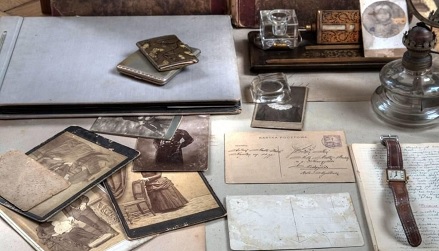A genealogy search often involves tracking names, dates, locations and relationships. This information can be found in various sources, including family bibles, newspaper clippings, and the backs of photographs, scrapbooks, and letters.
Official birth, death, and marriage records (vital records) are important sources for identifying family members. But where do you find them?
Birth Announcements
Birth announcements and other newspaper birth records are a valuable resource for genealogists. They are a great source of names and dates and can also provide clues about parents, relatives and even siblings.
In the past, it was common for parents to share their newest additions with friends and family by writing a short notice in a local newspaper. These articles may be compiled into an index or found on newspaper pages.
The accessibility of birth records varies, prompting individuals to inquire, are birth records public? This question leads to a nuanced exploration of privacy laws, jurisdictional regulations, and the differing policies determining birth records’ public or restricted nature.
Finding these types of resources can be especially helpful when official civil vital records are lost or difficult to locate. Often, natural disasters, fires and war have caused these important records to be destroyed or lost to the public.
Before searching newspaper birth announcements, research when the area of your ancestor’s birth started keeping records. Many states have a state office or department that keeps current records and transfers old records to an archive. For instance, they began recording births in 1847, and some towns kept a few years worth of records after that.
Obituaries
Obituaries are among the most important types of newspaper birth records for genealogists. They typically report the names of the parents, sometimes the place of birth, and other relevant details about an ancestor’s life. They often serve as substitutes or supplements to official government vital records.
Since the hurried nature of newspaper news reporting in years past often led to mistakes, researchers should treat obituaries with a bit of skepticism – they shouldn’t be relied upon as definitive proof of events. However, they can help lead researchers to other sources of information, such as hospital or doctor’s office records and additional news reports.
Obituaries were first published in newspapers around the 1600s, but they became common (along with death announcements) in the 1800s. Online sites offer a searchable index of obituaries, and you can also find them by using the Newspaper Directory to identify newspapers published in the period and area of your ancestor’s death. Then, check them on microfilm or online to see if they contain information about the deceased.
Death Announcements
When a loved one dies, it can provide clues to other family members. A death announcement often includes the deceased’s birth date, sex and place of birth. It may also name parents, occupations and other ancestors. In addition, an obituary often mentions surviving and predeceased children.
The most useful official records for researching births, marriages and deaths are vital. In the United States, these records usually contain names, relationships, dates of events, and identifying details such as birthplace and hospital.
Before statewide record-keeping began, local towns and cities kept their records. Many resources to find out when your ancestor’s hometown started keeping records.
Some collections include alternative sources for these records, including church records, family files and historical newspapers. For example, you can find New York City birth records from 1858 to 1909 on some sites online. These sources can be helpful when the official city copies are unavailable for research.
Marriage Announcements
When researching family history, it’s important to be flexible. It’s easy to focus on specific records – such as birth and death – but searching a wider range of sources is often helpful. One of the most useful is newspaper announcements.
Newspapers routinely published engagement announcements, marriage records and other wedding-related information. These items varied over time and from one newspaper to the next but can contain valuable clues for genealogists.
Using newspapers to track ancestors’ lives can also complement other sources of vital statistics records. The earliest newspapers printed short notices about the arrival of newborn babies. These articles were later compiled into indexes to help you track down an ancestor’s birth, death or marriage record.
Other sources for marriage-related records include church records, personal Bibles and obituaries. Each record type can provide a date for when a couple wed and separated. Censuses can also provide marriage-related information, as they will ask whether the person was married or widowed. However, not every census includes this information.
Birth Records
Aside from official government documents, birth announcements in newspapers provide a wealth of information prized by genealogists. A paid announcement might reveal not only the child’s name and date of birth but also the mother’s maiden name, the number and ages of other children in the family, and sometimes a father’s occupation and place of employment.
While it’s important to approach newspaper records with a healthy dose of skepticism, as the hurried nature of news-gathering back then often resulted in errors, these announcements can fill in gaps where other sources have failed. The place of birth, for example, can help researchers determine where to look for land and city directories or provide clues about the family’s religious affiliation.
Most states began collecting birth information in the early 1900s; however, some have records dating back much earlier.





